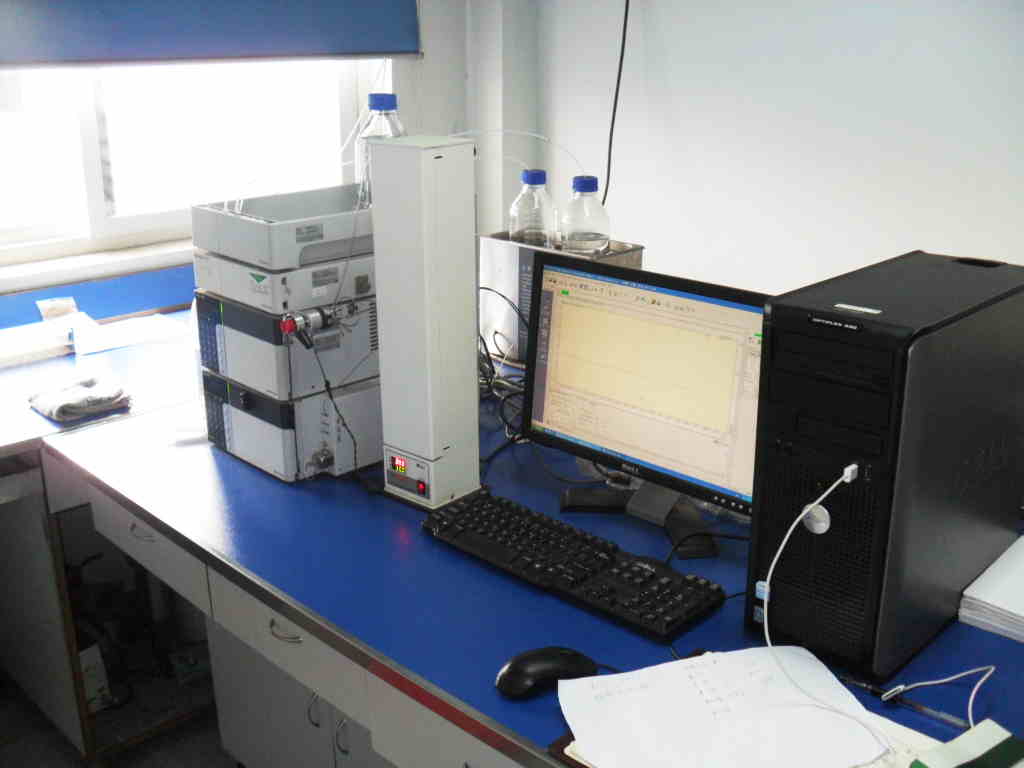商家信息

| 产品技术资料 | |||||||||
| 产品名称 | 脱落酸 Abscisic Acid 21293-29-8 | 品牌 | ABA | 牌号 | - | ||||
| CAS号 | 21293-29-8 | INCI | Abscisic Acid | ||||||
| 特性&功效 | |||||||||
|
|
|
||||||||
| 理化性质&指标 | |||||||||
| 有效物含量 | 98 | ||||||||
| 产品描述 | |||||||||
|
Abscisic acid (ABA)脱落酸 Physiological Role CAS #: 21293-29-8 packbage: 100g,1kg,5kgs, 25kgs 1. Stomatal regulation: The most significant and best known effect of abscisic acid is its control of stomatal closing in water stress or drought plants. It inhibits K+ uptake by guard cells and promotes the leakage of malic acid. It results reduction of osmotically active solutes so that the guard cells become flaccid and stomata get closed. 2 Seed and bud dormancy: ABA acts as growth inhibitor and induces bud dormancy in a variety of plants. It inhibits lateral growth of buds, as reported in Tomato. In general, it acts as an inhibitory chemical compound that affects bud growth, and seed and bud dormancy. In plant species from temperate parts of the world, it plays a role in bud and seed dormancy by inhibiting growth, but, as it is dissipated from seeds or buds, growth begins. In other plants, as ABA levels decrease, growth then commences as gibberellin levels increase. Without ABA, buds and seeds would start to grow during warm periods in winter and be killed when it froze again. Since ABA dissipates slowly from the tissues and its effects take time to be offset by other plant hormones, there is a delay in physiological pathways that provide some protection from premature growth. It accumulates within seeds during fruit maturation, preventing seed germination within the fruit, or seed germination before winter. 3. Seed development and germination: It has been observed that ABA accumulates in embryos of developing seeds, either it is synthesized de-novo or translocated from leaves. It inhibits formation of enzymes involved in germination process in the embryo and inhibits vivipary. Exogenous supply of ABA inhibits germination of most non-dormant seeds. As soon as it is removed by washing the seeds, the germination can take place which may be due to- inhibition of enzymes involved in germination process, inhibition of water uptake by germinating seeds, etc. 4. Senescence and Abscission: Many workers suggested ABA is an endogenous factor and involved in the senescence and abscission of leaves and other plant organs. Exogenous application of ABA induces primary yellowing in leaf tissues in a variety of species ranging from deciduous trees to herbaceous plants. ABA production increases in senescing leaves once the photosynthetic activity of the leaves decreases below the compensation point. 5. Geotropism: There are sufficient evidences to support that ABA controls geotropic responses of roots. Appreciable amounts of ABA have been detected in maize root tips. The accumulation of ABA in the tip appears to require light and gravity. It is produced in the root cap, translocate basipetally and stimulates positive geotropic response by acting as inhibitor. 6. Flowering: ABA acts as inhibitor of flowering in long day plants by counteracting the effect of gibberellins on flowering in these plants. On the other hand ABA induces flowering in short day plants. 7. Cambium activity: Abscisic acid stops mitosis in vascular cambium towards the approach of winter. 8. Role in water stress: Abscisic acid plays an important role in plants during water stress and drought conditions. It increases the tolerance of plants to different kinds of stress and is, therefore, called ‘stress hormone’. It has been observed that the concentration of ABA increases in the leaves of plants facing such stresses. In plants under water stress, ABA plays a role in closing the stomata. Soon after plants are water-stressed and the roots are deficient in water, a signal moves up to the leaves, causing the formation of ABA precursors there, which then move to the roots. The roots then release ABA, which is translocated to the foliage through the vascular system and modulates the potassium and sodium uptake within the guard cells which then lose turgidity, results in closing the stomata. 9. Counteracts the effects of other hormones: Abscisic acid counteracts the stimulatory /inhibitory effects of other hormones: i) ABA inhibits cell growth promoted by IAA, ii) ABA inhibits amylase produced by seeds treated with gibberellins, iii) ABA promotes chlorosis, which is inhibited by cytokinin. This may be due to the fact that ABA is a Ca++ antagonist and its inhibition of the stimulatory effects of IAA and cytokinin may be due to its interference with Ca++ metabolism. 10. Some other effects are: Inhibits cell division and cell elongation, Induction of parthenocarpic development of Rose, Increase resistance of plants to cold, Inhibition of gibberellin mediated synthesis of amylase during germination of cereal grains, Inhibits fruit ripening, etc. offer 600 kinds Botanical Extracts/ Cosmetic /Herba Raw Materials 1)Anti Aacne:Bakuchiol,Hinokitiol, Genistein,Stevioside... 2)Anti Allergy:Melatonin,Escin,Dipotassium Glycyrrhizate,Matrine,Paeonol 3)Freckle And Whiten:Tranexamic Acid,Undecylonyl Phenylalanine,Glabridin,Α/Β/D Arbutin,SAP,Niacinamide,Glutathion 4)Penetrating Agent:Azelaic Acid,Biotin,Hepes,Betulinic Acid 5)Serum Secret Inhibition:Silymarin,Rutin, Phloretin,Raffinose 6)Slimming Agent:L-Carnitine, Sclareolide,Caffeine, 7)Tonic/Hairgrowth:Minoxidil,Adenosine , Pyrrolidinyl Diaminopyrimidine Oxide ,Apigenin,Oleanolic Acid,Acetyl Hexapeptide-1,Copper Tripeptide-1 9)Anti Bacterial:Tropolone,Hinokitiol, Resveratrol,Oxyresveratrol,Pterostilbene 10)Scar Removal:Asiatic Acid,Heparin, Hesperetin Pleacse contatact Arthur lee Whatsapp: +8613566347633 Wechat: Plantextracts Eamil: Chineseherbmedicine@yahoo.com 120933351@qq.com
|
|||||||||
| 应用&使用方法 | |||||||||
| 具体应用 | 建议用量 | 使用方法 | |||||||
| - | - | - | |||||||
| 包装及存储 | |||||||||
| 包装 | 1 | 有效期 | - | 存储条件 | - | ||||
| 注意事项 | |||||||||
| - | |||||||||

